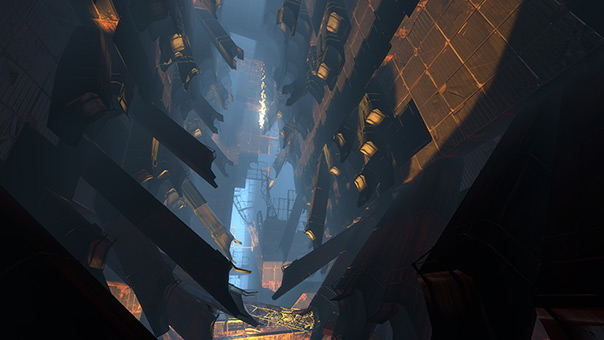Pacing in Puzzle Games on the Example of Portal 2
Time to get messages on this blog going again. Today I want to talk about Portals. Mostly Portal 2. I know what you’re thinking. You’re thinking, ‘Hey, Stas, is this one of those obligatory posts about Portal’s smart level design and learning curve and the way it teaches you to overcome obstacles?’ And my answer to you would be, no. It is not. It’s about something different, as you probably could gather by the title, though related in a way.
The topic is about pacing in Portal 2. That game is exceptional at it. Pacing is a very weird thing when it comes to puzzle games, because a section may take 5 minutes to complete, or the same section may take 20 minutes to complete, there’s no real way to know. More than that, puzzle games usually have, well, puzzles going practically one after another (duh, I guess), and even with elements that add variation to the experience, it may get tiresome after a while, you kinda want to take a break for a bit.

As an example of that last part, let me talk about Waking Mars. Like Portal, Waking Mars is essentially divided in puzzle chambers, where you need to build enough Biomass by growing lifeforms to continue further. And then you need to do it again. And again. And more Biomass. The amount of plants and animals and seeds that you get to work with expands, and yeah, there’s dialogue and some mystery going on there, but as you go it’s mostly Biomass, Biomass, Biomass, Biomass, Biomass, Biomass. You go through one chamber, Biomass again. Now, granted, Waking Mars is originally an iOS title, so most players wouldn’t really have long play sessions, they’d go through one or two chambers, take a break, then get back into the game later, thus lessening saturation. But I played it on PC, where I decided to dedicate an evening to Waking Mars, and after hours of playing, variety of puzzles and elements wasn’t enough, I got saturated with the experience and just said, ‘Ok, I need to stop, I’m tired of this’. I actually still haven’t come back to the game since then. On a side-note, in no way, shape, or form am I calling Waking Mars bad, I just want to show a point about pacing in puzzle games.

Now, the first Portal solves this problem with its length, really. Around 20 test chambers, that progressively add new elements into the mix, with GLaDOS’ voice overs keeping you entertained, a small set piece followed by a little change of scenery that provides a final test of all skills you learned, culminating in a boss battle. It takes about 2-3 hours in total, the game ends before it has a chance to saturate you with the experience. But Portal 2 is about 8-10 hours long. And more than that, as I was playing it for a prolonged time, not even once I wanted to say, ‘Ok, I need to stop, I’m tired of this’, though most of the game still revolved around test chambers where you needed to find a way to open a door to progress. So how does Portal 2 keep the player’s interest? Here are my thoughts on that.

1. The characters. Not really the story (though a story may play a big role, of course), because I wouldn’t say that Portal 2’s plot is that interesting on paper. I mean, it’s not bad, but if you retell it to a person, it wouldn’t really excite anyone. It’s the characters. Though there’s only four of them in the game, and one of them (the player) is mute and another is long dead, not only are they charismatic and really well-written, they also progress as characters and the situation around them changes and their role changes as well, keeping the set-up dynamic.

2. The changing environments. Not just in visuals, but in tone and scope as well. In Portal 2 we have overgrown ruins, clean and expansive test chambers, dark labyrinths behind the scenes, old massive remains of a place long abandoned. The eye never lingers too long on the same type of surroundings.

3. Adventurous set pieces. And this is a very important thing. Not only do those set pieces allow the brain to rest for a bit (you still have to use portals, but the situations are more streamlined), they also allow to have bigger progressions for characters and the story, and make the changes of the environments more natural. And they happen at a pretty regular interval. It’s important to note that the core of the game is still the puzzles, as it should be, but those action-adventure interludes act as sort of a cleanser to the experience.

4. And of course, great level and puzzle design. I told you that it’s related! But just great level design on its own wouldn’t really help the pacing issues. There has to be the previous points present I feel, otherwise even great level and puzzle design will just get tiresome. Though, I must say, the co-op campaign is more of a ‘puzzle after puzzle’ experience, but, a) it’s shorter, b) you play with another person (usually a friend, usually with direct communication) which helps to keep it engaging.
You can apply those points to any puzzle game really. Even the set pieces, maybe that could be mini-games or stuff like that, really depends on the kind of the game we’re talking about.
But there you have it. These were my thoughts on the pacing of puzzle games in general and Portal 2 in particular. What do you think? Is there anything you disagree or agree with? All comments are welcome! Thank you for your time! See you later!
Posted on June 19, 2015, in Game Design and tagged Game Design Analysis, Portal, Waking Mars. Bookmark the permalink. Leave a comment.
Leave a comment
Comments 0